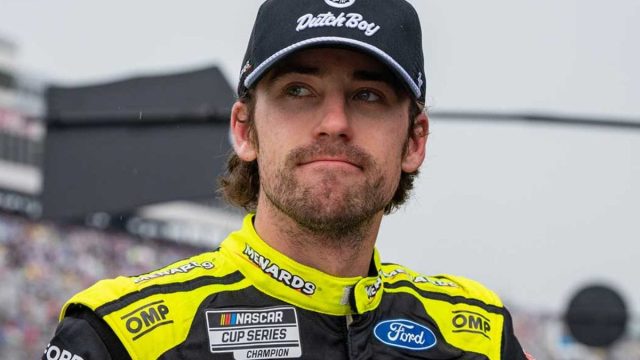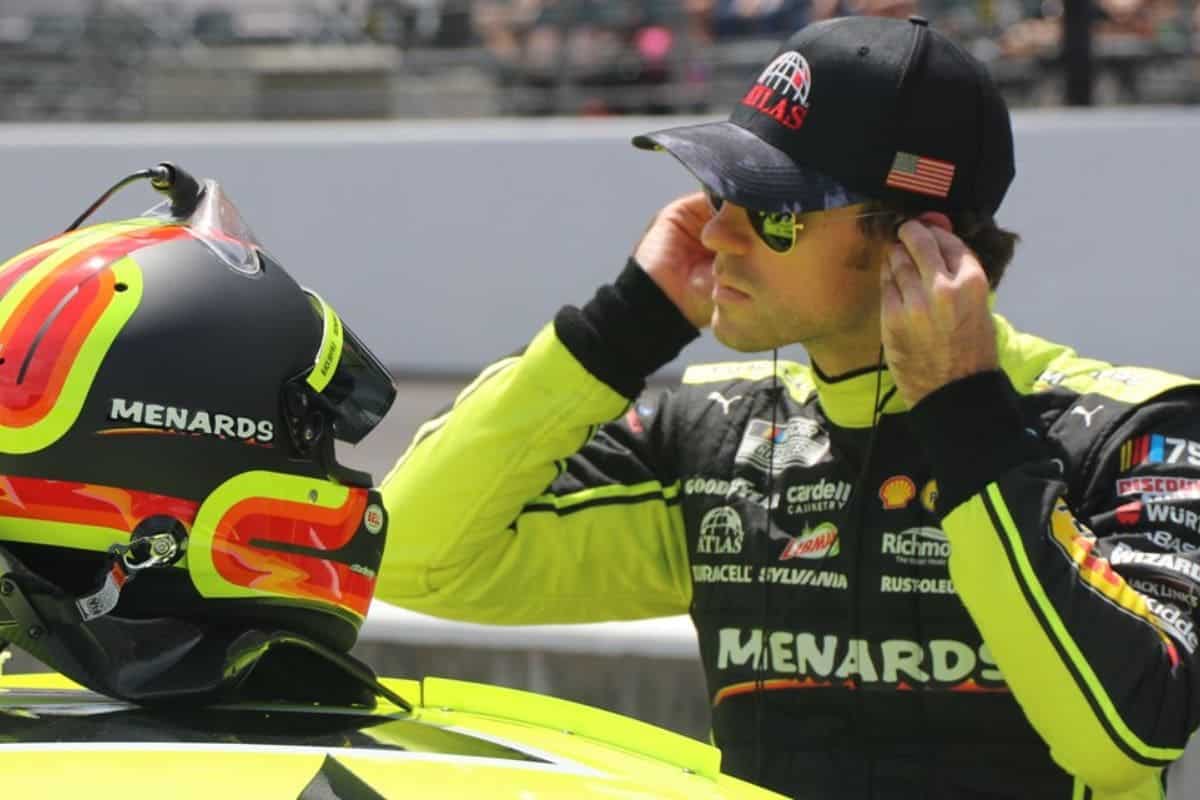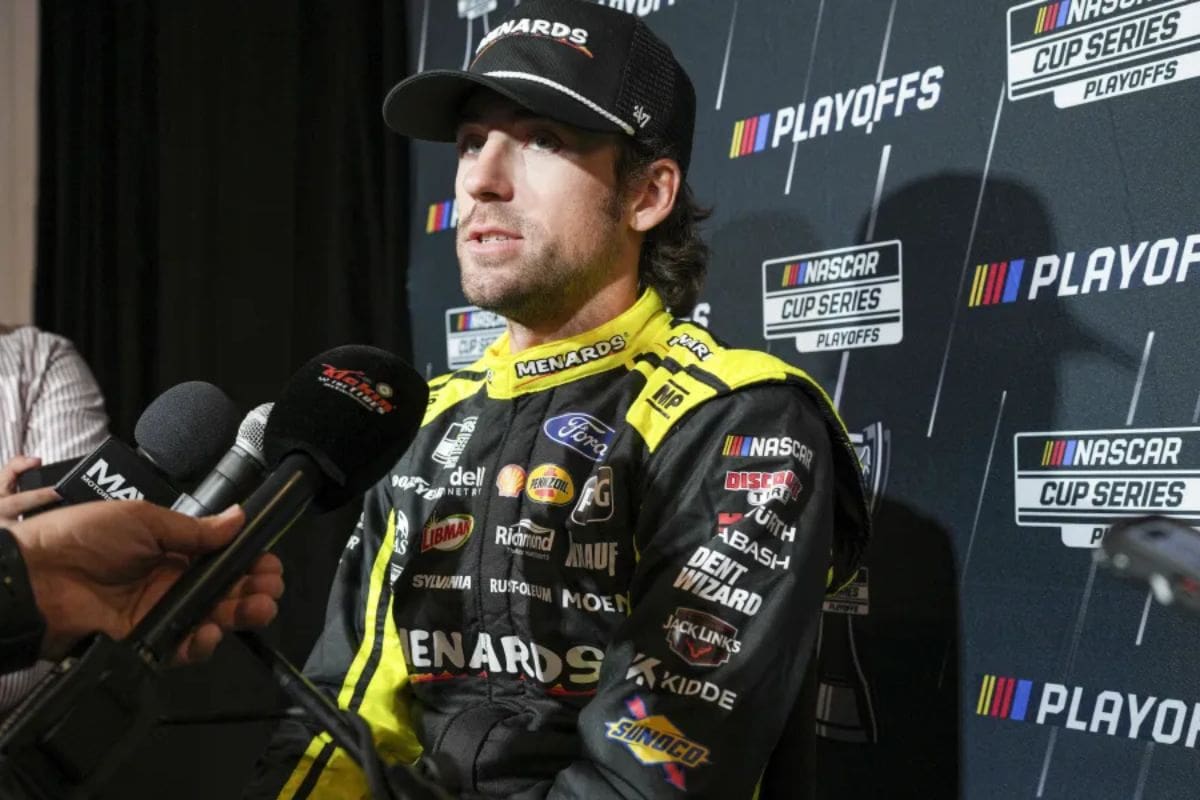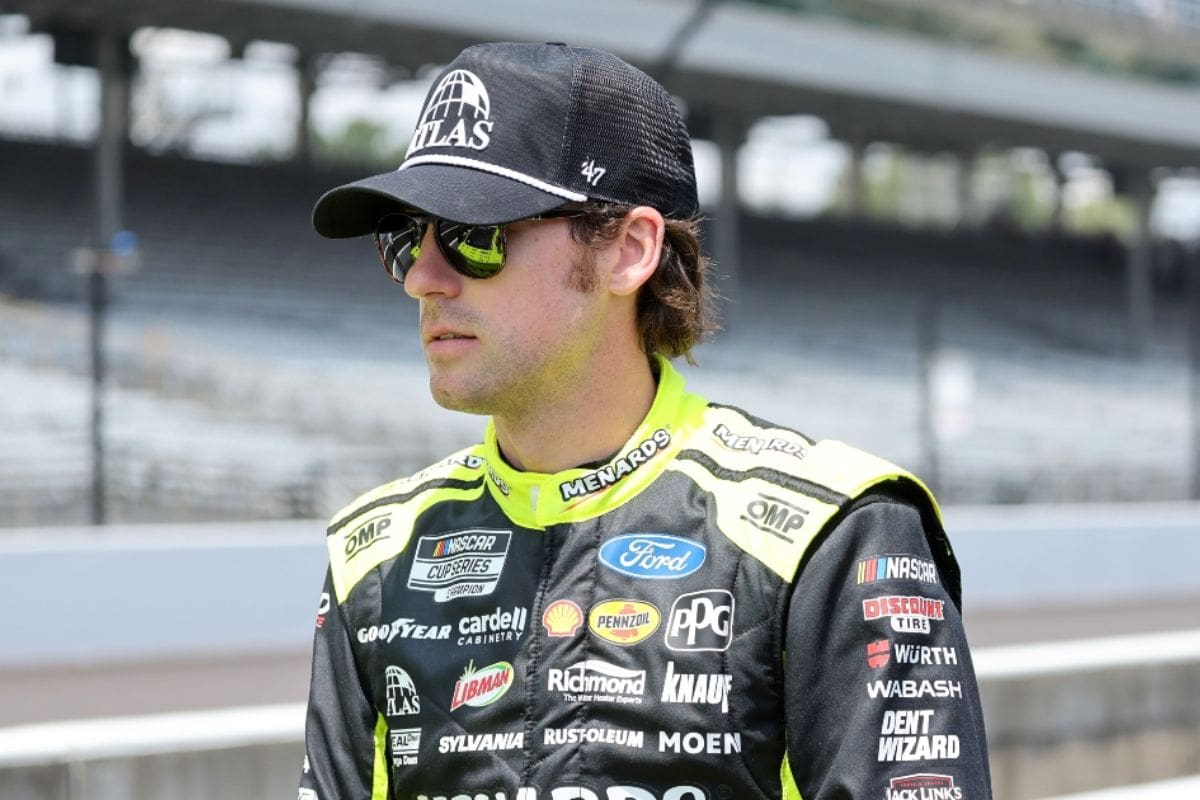Ryan Blaney’s NASCAR Tantrum Turns Into Apology: Ryan Blaney‘s recent experience at Watkins Glen serves as a compelling case study in the intersection of emotional intensity and regulatory frameworks within NASCAR. Initially expressing frustration over his early exit and the inability to repair his vehicle, Blaney’s outburst reflects a common tension among drivers when faced with strict adherence to rules. However, his subsequent acknowledgment of NASCAR’s decisions highlights a significant evolution in his understanding of the sport’s governance. This transformation raises questions about the balance between competitive drive and compliance, along with the implications for Blaney’s playoff aspirations moving forward.
Key Highlights
- Ryan Blaney initially reacted with frustration after being forced to retire due to NASCAR’s Damage Vehicle Policy following a lap one wreck.
- He believed the damage to his car was repairable and disagreed with NASCAR’s decision to not allow repairs.
- Blaney later acknowledged that NASCAR’s enforcement of the rules was justified and reflected on his misjudgment of the regulations.
- His experience highlighted the importance of understanding NASCAR’s rules for drivers in high-pressure situations and maintaining competitive integrity.
- The incident emphasized the need for accountability and maturity among drivers, fostering a better relationship with NASCAR’s regulatory framework.
Ryan Blaney’s Race Ends Early at Watkins Glen
In NASCAR, Ryan Blaney‘s race at Watkins Glen came to an unexpected and premature ending after a major wreck occurred on lap one. The incident involved multiple cars and resulted in considerable damage, effectively derailing Blaney’s competitive strategy early in the event. Despite his initial belief that he could continue racing, the extent of the damage forced Team Penske to retire the vehicle to the garage.
Per NASCAR’s Damage Vehicle Policy (DVP), a car that can reach the pit lane is typically afforded the opportunity to be repaired, allowing teams to rejoin the race. However, this provision did not apply to Blaney, as his vehicle was unable to make it to the pits due to the severity of the damage. This critical moment highlights the intricate mechanics of NASCAR rules, where adherence to protocol can decisively impact race outcomes.
The abrupt ending of Blaney’s race not only robbed him of valuable playoff points but also emphasized the unpredictable nature of motorsport. While the immediate aftermath elicited frustration from the driver, it also served as a reminder of the importance of resilience and adaptability in the face of unforeseen challenges.
Blaney’s experience at Watkins Glen presents the razor-thin margins that define success and failure in NASCAR, where a single moment can redefine a season’s path and provoke introspection within the sport’s elite competitors.
Blaney’s Initial Frustration and Reaction
Experiencing the sudden end of a race can evoke a range of emotions, and for Ryan Blaney, frustration was paramount following his early exit at Watkins Glen. His immediate reaction revealed a sense of helplessness as he grappled with the implications of NASCAR’s Damaged Vehicle Policy. As his No. 12 Ford was towed to the garage, Blaney expressed his discontent, stating, “Give us a chance to fix it. They have no idea of the damage.” This sentiment mirrored the broader frustrations of drivers who often feel sidelined by regulatory decisions.
This initial outburst reflects a deeper frustration that many drivers face when their race is abruptly cut short. Blaney’s reaction was not merely a personal grievance; it covered the tension between a driver’s instinct to compete and the rigid enforcement of rules designed to maintain safety and fairness in the sport.
Blaney Acknowledges NASCAR’s Decision Was Correct
Following his initial outburst, Ryan Blaney took a step back to reassess the situation and ultimately acknowledged that NASCAR’s decision was justified. His admission reflects a maturity and understanding of the complexities involved in race regulations.
“You know, when we got the damage and broke the part, I thought, and honestly I’ll say all of us on the 12 team thought, you know, ‘Hey, bring us back to our stall. Let’s just at least take a look at it and see if we can fix it.’”-(ryan)
Initially frustrated by the damage incurred during a race, Blaney expressed a desire to return to the track, believing that repairs could be made. However, the explanation provided by Brad Moran, the Cup Series Managing Director, illuminated the intricacies of NASCAR’s rules regarding vehicle recovery.
” So, when I gave my TV interview, I didn’t know the rule until I got back to the garage after the care center, and then we sat down and kind of went through the rule book. NASCAR did everything by the rule book. If you are involved in an incident and you cannot drive it back to the pits unless you have four flat tires and you cannot move, then you are done, to their discretion.”-(blaney)
Blaney openly addressed his misjudgment during a subsequent interview, clarifying that his understanding of the rules was limited at the time of his outburst. His admission highlights the importance of thorough knowledge of the rulebook, especially in high-stakes environments where emotions run high.
“NASCAR did everything that the rule book said, so I don’t blame them for it at all.” -(ryan)
This acknowledgment not only demonstrates Blaney’s respect for the regulatory framework but also his willingness to accept accountability for his reactions. Such a response is crucial in building a collaborative relationship between drivers and governing bodies.
Understanding the Rule and Moving Forward
Understanding the intricate details of NASCAR’s rules is essential for drivers navigating the high-pressure environment of competitive racing. In the case of Ryan Blaney, his recent experience highlighted the importance of adhering to these regulations, particularly when faced with adversity on the track. After suffering from four flat tires, which ultimately hindered his ability to reach the pit lane, Blaney found himself in a precarious situation.
🔊 "After learning the rule, I fully understood it."
Ryan @Blaney cleared up any confusion on the damaged vehicle policy leaving @WGI and said that "#NASCAR did everything by the rulebook."
More → https://t.co/MKhd9eLXG8 pic.twitter.com/0jz3I3qlmp
— SiriusXM NASCAR Radio (Ch. 90) (@SiriusXMNASCAR) September 18, 2024
However, his acknowledgment of NASCAR’s adherence to the rulebook demonstrates a commitment to fairness and integrity in the sport. Blaney’s admission that “NASCAR did everything that the rule book said” reflects a broader understanding among drivers that rules are in place to guarantee safety and competitive balance. This insight is fundamental for any competitor who wishes to navigate the complexities of racing effectively.
By recognizing the necessity of these regulations, Blaney not only displays his professionalism but also sets a precedent for fellow drivers to follow in accepting the consequences of their performance. Moving forward, it is critical for Blaney to channel this understanding into his preparation for upcoming races, such as the Bristol event.
With a clearer mindset and a renewed focus on the rules governing the sport, he can approach future challenges with resilience. Ultimately, embracing the rule structure allows drivers like Blaney to enhance their performance while maintaining the sport’s integrity, solidifying their positions as both competitors and ambassadors of NASCAR.
Blaney’s Playoff Standing Ahead of Bristol
As the playoffs approach, Ryan Blaney finds himself in a vital position, currently ranked eighth following a challenging DNF at Watkins Glen. This drop from third to eighth, while considerable, does not place him in immediate danger of elimination. The stakes are high as he prepares for the upcoming race at Bristol, a track where his performance has been inconsistent.
Blaney’s current standing can be analyzed through three key factors:
- Point Margin: Blaney holds a narrow lead over Kyle Larson, who trails by just three points. This proximity highlights the necessity for Blaney to optimize his performance at Bristol.
- Track History: While Blaney has yet to secure a victory at Bristol, his experience on the circuit is invaluable. His ability to navigate the challenges of this unique track could be the difference between advancing and facing elimination.
- Competitive Landscape: With Joey Logano’s recent victory at Watkins Glen, the urgency intensifies for Blaney to not only catch up but also to utilize his teammate’s momentum to his advantage.
Given the current dynamics, Blaney’s path to retaining his Cup Series Championship title hinges on tactical execution at Bristol. He must take advantage of this opportunity to regain lost ground and solidify his playoff position.
With the right mindset and performance, Blaney can still contend fiercely in this playoff battle, making Bristol not just a race, but a crucial moment in his championship pursuit.
News in Brief: Ryan Blaney’s NASCAR Tantrum Turns Into Apology
Ryan Blaney’s experience at Watkins Glen serves as a poignant reminder of the complex interplay between competitive emotions and regulatory frameworks within NASCAR. Initial frustration shifted into a constructive acknowledgment of the necessity for adherence to established rules, emphasizing the importance of understanding the governing body’s decisions.
This evolution in perspective not only reinforces the integrity of the sport but also highlights the significance of collaboration between drivers and NASCAR in fostering a fair and competitive environment.
ALSO READ: Ryan Blaney’s Watkins Glen Misery Sparks NASCAR Policy Controversy!



